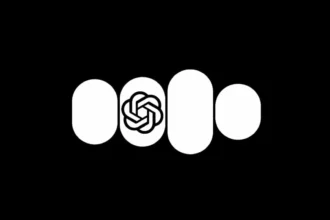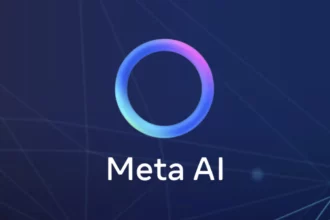Have you ever stared at a graph and wondered, “Is this beautiful representation of data truly crafted by a human, or did an AI whip it up in seconds?” In the age of rapid digital creation, discerning the origin of charts takes on a significance as pressing as determining the authenticity of art in an era flooded with prints. While ChatGPT excels in crafting visually stunning graphs, subtle clues often betray its artificial hand—such as inconsistencies in style or odd data patterns that only a discerning eye might catch. As we delve deeper into this topic, we’ll unravel the intricate dance between human perception and machine generation, exploring the nuances that define our understanding of AI-made visuals.
Table of Contents
ToggleCan people easily identify if graphs are generated by ChatGPT?
Definitely! Although ChatGPT is capable of producing visually appealing graphs, there are certain telltale signs that can reveal their AI origin to the trained observer.
For instance, inconsistencies in style can often stand out. A graph might adhere to one aesthetic convention but diverge dramatically in another aspect, which may raise eyebrows among astute viewers.
Additionally, if the data presented has peculiar patterns or appears to be presented in an unusual way, it could suggest the graph has been crafted by AI rather than a human analyst.
Another critical factor to consider is the integrity of the input data.
If the information fed into ChatGPT is flawed—whether it’s incomplete, inconsistent, or riddled with outliers—the resulting graph can become nonsensical or misleading. Such anomalies often act as a “giveaway,” marking it as a product of artificial intelligence rather than a carefully constructed human visualization.
For instance, suppose you come across a bar chart that ascribes unusual measurement units or employs unconventional scales—this could be a red flag signaling that an AI tool was involved.
Moreover, more technical aspects like statistical anomalies can also indicate an AI’s handiwork; these may include odd peaks or troughs in the data that don’t make sense within the context of the subject matter. Ultimately, while ChatGPT’s graph generation can be quite sophisticated, human expertise is invaluable for quality assurance.
Experts can not only spot these discrepancies but also provide necessary insights and adjustments that enhance accuracy and clarity—transforming potentially ambiguous AI outputs into visually coherent and meaningful representations.
So next time you come across a graph, ask yourself: does it look too polished? Or suspect? These questions might just lead you to uncover its AI origins!
How does the quality of input data affect graph accuracy in ChatGPT?
The crux of graph accuracy lies in the quality of the input data! When it comes to generating accurate graphs with ChatGPT, the data you provide is crucial. If that data is incomplete, inconsistent, or riddled with outliers, you can expect the resulting graphs to mirror these shortcomings.
Think about it this way: if you’re building a rocket and only have half the necessary parts, you’re not going to reach Mars anytime soon. Consistency and high-quality data are absolutely essential for generating reliable visual representations.
To give you a better perspective, consider a scenario where you’re analyzing sales figures for a new product.
If your input data only includes sales from certain regions while ignoring others, or if it contains errors like duplicated entries or incorrect values, the graph will present a skewed view of your product’s performance. This can lead to poor decision-making based on misleading visuals.
It’s akin to navigating using an outdated map; you might end up taking completely wrong turns!
Moreover, ChatGPT may not always have access to real-time data sources or updates; any changes in underlying information won’t be reflected in its generated graphs.
This further underscores the importance of providing up-to-date and comprehensive datasets.
Ideally, before relying on these visualizations for any strategic decisions, they should undergo thorough review by experts who can spot potential inaccuracies and ensure that they represent the intended insights effectively.
As we advance into an age where AI tools become integral to our workflows, complementing them with human expertise is not just advisable but essential. The collaborative effort between AI-generated content and human validation creates a sturdy foundation for achieving accurate and meaningful representations of any data set.
Why is human validation critical for graphs generated by ChatGPT?
Relying solely on AI tools like ChatGPT for graph generation can lead to significant pitfalls, making human validation an indispensable part of the process.
While ChatGPT is incredibly adept at generating visual representations of data, it lacks the nuanced understanding and context that human experts possess.
To put it simply, an AI may produce a graph that looks great on the surface but misses out on critical insights that only a skilled data analyst can recognize.
Just think of it as if you were crafting a novel; the first draft might have brilliant ideas but still requires a meticulous review to ensure clarity and coherence.
Human intervention plays a vital role in verifying that the graphs effectively communicate the intended messages derived from complex datasets. Data analysts are equipped with specialized knowledge, allowing them to identify patterns or trends that an AI might overlook or misinterpret.
For instance, if the input data contains anomalies or inconsistencies, an AI may generate misleading visuals—a risk that trained professionals can mitigate by examining the data thoroughly and incorporating their expertise into the final product.
Moreover, while ChatGPT can offer impressive initial visualizations, its generalization capabilities are not foolproof. The intricacies of domain-specific knowledge often elude AI understanding, which can lead to errors or biases in graph generation.
Therefore, without human checks and balances, there’s a considerable risk in using generated graphs for decision-making purposes.
To illustrate this further, imagine relying on an algorithm to diagnose a medical condition; however sophisticated it is, it cannot replace the skill and judgment of a seasoned physician.
Similarly, while ChatGPT can provide valuable input for visualizing data, thorough human validation is necessary to ensure accuracy and relevance before any conclusions are drawn from these representations.
In summary, treating outputs from AI models as starting points rather than final products enhances both accuracy and insight. Engaging human expertise ensures not just precision in representation but also greater depth in interpretation—transforming initial drafts into polished masterpieces.
What limitations does ChatGPT have regarding graph generation?
ChatGPT is undoubtedly a remarkable tool for generating visual content, but it comes with certain limitations when it comes to graph generation.
While its prowess in text generation is commendable, the accuracy of generated graphs can sometimes falter due to inherent biases or misinterpretations of the input data.
Imagine trying to navigate a complex landscape with only a simplified map; that’s somewhat akin to how ChatGPT may handle intricate datasets. It may struggle to fully grasp the subtleties and nuances that a human expert can easily identify. As a result, you might end up with oversimplified or inaccurate graphs that don’t accurately reflect the underlying data trends.
Another issue is that ChatGPT doesn’t inherently understand context or the story behind the data points.
If the dataset itself is nuanced—comprised of multiple variables and interdependencies—ChatGPT might present a streamlined visualization that overlooks key insights or significant relationships, which could lead to misrepresentations.
Moreover, there’s an important aspect to consider: relying solely on AI-generated outputs without human oversight can exacerbate potential data inaccuracies.
Without a knowledgeable individual reviewing the results, critical errors might slip through the cracks, complicating data-driven decision-making processes.
It’s essential to remember that while AI can be a valuable ally in data visualization, it serves best as a complementary tool alongside human expertise.
So when using ChatGPT for graph generation, think of it as your starting point for insight rather than a final destination. Pairing AI assistance with thorough human validation ensures you achieve not only precision in your representations but also a greater depth of understanding that informs your decisions effectively.
How does ChatGPT utilize plugins for graph generation?
How does ChatGPT utilize plugins for graph generation?
ChatGPT has the ability to harness third-party plugins, which allows it to generate a diverse array of graphs—ranging from histograms and bar charts to intricate network diagrams.
This flexibility is impressive, but there’s a crucial caveat: the overall effectiveness of these tools largely depends on the accuracy and clarity of the input data. Imagine trying to build a high-quality blueprint without clear measurements; the final product is bound to be flawed.
If any misunderstanding or inaccuracies creep into the data you provide, the visualizations ChatGPT produces can end up being misleading or incorrect, potentially distorting the insights you aim to convey.
This scenario underscores the importance of meticulously vetting your data before allowing AI to take over.
Think about it like fine-tuning an orchestra—a well-coordinated effort between input quality and AI capabilities produces not only visually appealing but also meaningful representations that truly reflect the underlying information.
To maximize your success, always ensure that the data is clean and precise before initiating graph generation. The combined strength of high-quality input and advanced AI tools can lead to insightful visualizations that inform better decision-making.



